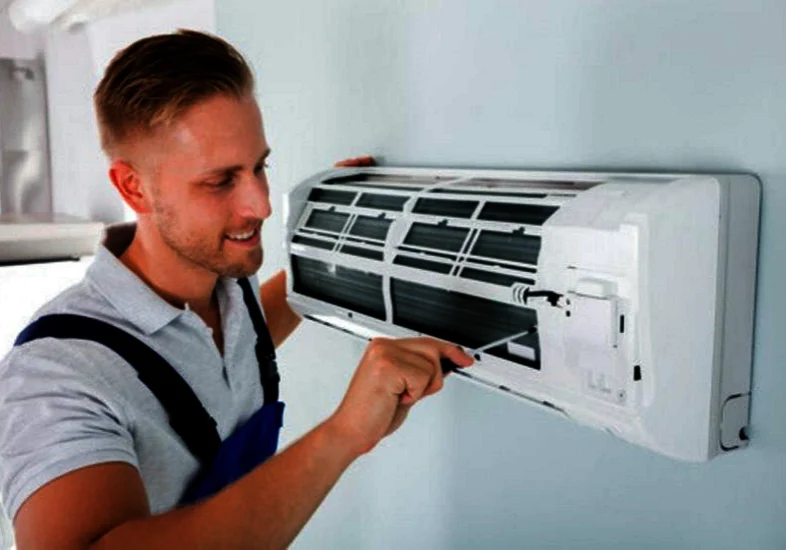What to Expect in Annual Maintenance for Your Mini Split System: A Guide

When it comes to keeping your home comfortable,your mini-split system plays a vital role—much like the engine in a car.Just as that engine requires regular oil changes and check-ups to run smoothly,your mini-split system needs annual maintenance.Many homeowners overlook this essential upkeep,often waiting for something to go wrong before taking action.Investing a little time and money into regular service can save you from costly repairs later on and keep your unit functioning efficiently.This guide will walk you through what to expect during your mini-split’s annual maintenance,highlighting why each step is crucial for both your comfort and your wallet.Let’s dive in!
Overview of Annual Maintenance
Annual maintenance for your mini-split system is more than just a routine check-up;it’s an essential practice that significantly improves performance and longevity.The heart of this service lies in its proactive approach to identifying potential issues before they escalate into larger,costly problems.Regular upkeep can enhance system efficiency by up to 20%,directly translating into lower energy bills and increased comfort in your home.Conversely, check this neglecting maintenance can cause a 5% decrease in efficiency each year,leading to expensive repairs down the line.
A typical annual maintenance visit encompasses several key tasks.Technicians begin by cleaning or replacing air filters—a critical step that impacts air quality and the overall performance of your unit.Dirty filters impede airflow and reduce efficiency,requiring more energy to run the system.Following that,technicians inspect refrigerant levels,ensuring no leaks affect your system’s cooling capabilities.This inspection maintains optimal performance and helps prevent damage to internal components due to inadequate refrigerant levels.
Checking electrical components is another vital part of routine maintenance.Technicians will assess connections,test circuit boards,and ensure everything is functioning properly.Ignoring these checks can lead to unexpected failures and possibly further damage that could compromise the entire unit.
The exterior of the mini-split system is not overlooked either.Technicians clean both the condenser and evaporator coils to ensure efficient heat exchange,removing any debris or buildup that could obstruct airflow. tramadol online overnight mastercard Think of these coils as the lungs of your mini-split system—just as we need clean air to breathe easily,your system requires unobstructed coils to operate effectively.
By completing each of these steps carefully,your technician not only maintains function but also protects your investment for years to come.
Homeowners often wonder about the cost of annual maintenance.While pricing varies depending on the service provider and the system’s complexity,it generally falls between $150 and $300 per visit.Many find this expense reasonable when weighed against the potential costs of unexpected repairs or premature unit replacements.Regular servicing also helps maintain the manufacturer’s warranty,which often requires adherence to preventative maintenance schedules.
Key Components to Inspect
Think of maintenance like a healthcare check-up for your mini-split system.Just like our bodies,these systems need regular monitoring to catch potential issues before they escalate.A thorough inspection begins with the indoor unit,where evaporator coils play a crucial role.These coils absorb heat from your home,so it’s essential that they remain clean and free from dirt or debris.Dust accumulation can hinder their efficiency,causing strain on the system and higher energy bills.
Next,don’t overlook the blower fan in the indoor unit.A dusty blower fan can restrict airflow,inhibiting the cooling or heating process.Just like we feel congested when our noses are blocked,your mini-split struggles to deliver comfort if airflow is restricted.Regular cleaning of this fan will not only help maintain efficiency but also prolong its lifespan.
Outdoor Unit Components
Now,let’s shift focus to the outdoor unit—the unsung hero of your mini-split system.The compressor,essentially the heart of the system,circulates refrigerant through both the indoor and outdoor units.Thorough inspection of this component helps identify early signs of wear or damage that could lead to costly repairs.
The condenser coils also require attention.Keeping them clean ensures optimal heat exchange performance.If debris builds up around these coils—a common issue—it can dramatically reduce efficiency and lead to overheating.Be sure nothing is obstructing airflow around the outdoor unit,such as leaves,dirt,or overgrown grass.
Just as a well-oiled machine performs better,a well-maintained mini-split system creates a more comfortable living environment and saves you money on energy costs.
Routine Cleaning Procedures
Regular cleaning of mini-split systems isn’t just a good habit;it’s essential for maintaining efficiency and indoor air quality read full guide .Neglecting this task can lead to increased energy bills,inefficient operation,and even health issues stemming from poor air quality.Imagine coming home after a long day,hoping to enjoy the comfort of your climate-controlled space,only to be greeted by stale air.That’s what happens when you ignore routine upkeep!
Key components to focus on for cleaning are air filters,evaporator coils,and condenser coils.Air filters should ideally be checked every month and cleaned or replaced as necessary.A dirty filter restricts airflow,which compromises both efficiency and air quality within your home.
Air Filters
To clean air filters effectively,start by turning off your mini-split unit to avoid any mishaps.Remove the air filters gently without damaging any clips.Reusable filters should be rinsed with lukewarm water and mild detergent.This process should take no more than 10-15 minutes.Rinse the filters until the water runs clear,then allow them to dry completely before reinserting.
Once you’ve tackled the air filters,move on to another critical component:the evaporator coils.
Evaporator Coils
Evaporator coils can accumulate dust and debris over time without you even noticing.This layer of dirt acts like a blanket,insulating instead of allowing proper heat exchange.For these coils,use a soft brush attachment with a vacuum cleaner or a handheld vacuum to gently remove any buildup.If particularly dirty,use a damp cloth with mild detergent to wipe them down—just avoid soaking them.Clean coils allow your system to cool or heat your indoor space efficiently.
With these interior components addressed, open article it’s time to shift focus to the outdoor unit,particularly the condenser coils.
Condenser Coils
Outdoor condenser coils face their own set of challenges,like pollen in the spring or dust in the summer.While light cleaning can be done by rinsing off debris with a hose at low pressure,more stubborn grime often requires professional attention.Technicians use specialized coil cleaners to break down dirt without damaging the unit’s fins or tubing.
Some tasks are manageable for homeowners tramadol online overnight ,but certain aspects require professional help—especially if you’re unsure about disassembly or fear causing damage.
Refrigerant Levels and Recharging
Maintaining proper refrigerant levels is crucial for your mini-split system’s performance and longevity.Think of refrigerants as the heart of the HVAC system—they absorb heat and release it to help maintain comfortable temperatures.If refrigerant levels are low,your system has to work harder,leading to unnecessary wear and tear.
Checking and recharging refrigerant levels ensures optimal system performance.Technicians use specialized gauges to measure pressure accurately.If refrigerant levels are low,they’ll investigate further,often using leak detectors or UV dye to identify and repair leaks before recharging the system.
Optimizing refrigerant levels not only enhances comfort but also protects against costly repairs down the line.
Assessing System Performance
Regular assessments of your system’s performance are key to ensuring long-term efficiency.Technicians monitor parameters like airflow,temperature differential,and system cycling.Airflow measurement ensures that your system meets specified standards,directly affecting comfort and energy costs.A significant temperature differential indicates effective cooling or heating.System cycling checks ensure your mini-split turns on and off correctly—avoiding short-cycling,which can reduce comfort and efficiency.
By understanding these performance metrics,you can spot potential issues before they become major—and costly—problems.
Performance Tests
- Airflow Measurement: Ensuring sufficient airflow maintains comfort and reduces energy costs.
- Temperature Differential: A significant temperature change indicates effective performance.
- System Cycling: Monitors proper function to avoid excessive wear on components.
Understanding these performance metrics provides valuable insight into your mini-split’s health,helping identify potential issues before they escalate into much larger—and often more expensive—problems.Regular evaluations can significantly affect maintenance strategies while enhancing overall reliability and efficiency.
Maintenance Costs and Benefits
Annual maintenance may cost between $150 and $300,but when you weigh it against potential savings on repairs and energy bills,it’s a smart investment.Regular attention fosters longevity,helping prevent costly system failures or major repairs.Neglecting maintenance could lead to repairs exceeding $1,000.
Financial Benefits
| Maintenance Aspect | Immediate Cost | Long-term Savings |
| Annual Service Fees | $150-$300 | Up to $500/year saving on energy efficiency |
| Preventive Maintenance | $200 average | Avoids $1000+ in major repairs |
| Professional Cleaning | $100-$200 | Increased HVAC efficiency,lower energy bills |
Beyond the financial benefits,regular maintenance improves indoor air quality and ensures consistent system performance.Knowing your mini-split is running at its best gives you peace of mind.
Conclusion
Prioritizing maintenance for your mini-split system offers both financial savings and enhanced comfort.For expert annual maintenance services,visit Diamond Comfort today at 102 Valley Rd,Southampton,MA 01073 or call (413) 527-4737,where professional care meets quality assurance!
Have Any Questions?
Get in contact with us today! We are always happy to help, and you can count on our expertise.

